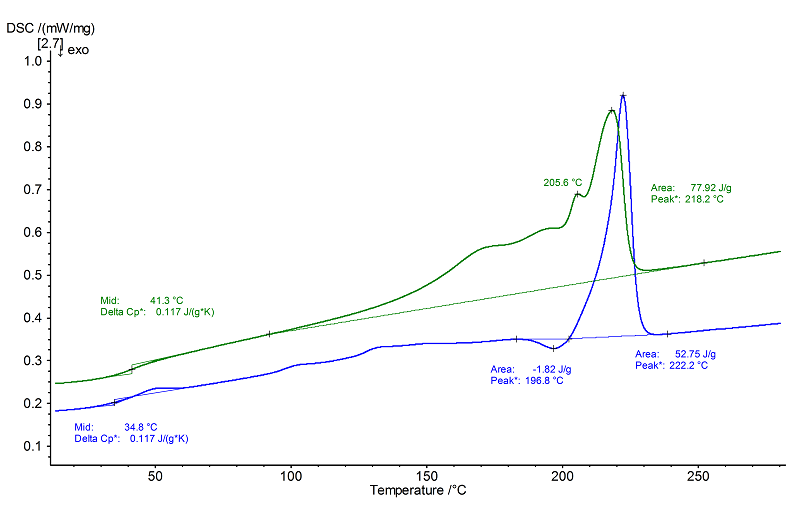PA610: Polyamide 610
- Short Name
- PA610
- Name
- Polyamide 610
- Group
- ETP - Engineering Thermoplastics
- General Properties
- Chemical Formula
- Structural Formula
-

Properties
- Glass Transition Temperature
- 40 to 70 °C
- Melting Temperature
- 210 to 230 °C
- Melting Enthalpy
- 117 to 227 J/g
- Decomposition Temperature
- 450 to 470 °C
- Young's Modulus
- 2200 MPa
- Coefficient of Linear Thermal Expansion
- 70 to 90 *10¯6/K
- Specific Heat Capacity
- 1.6 J/(g*K)
- Thermal Conductivity
- 0.2 W/(m*K)
- Density
- 1.07 to 1.09 g/cm³
- Morphology
- Semi-crystalline thermoplastic
- General properties
- Very high mechanical strength. Good UV and chemical resistance. Good heat resistance. Low water absorption compared to short-chained standard polyamides
- Processing
- Injection molding, extrusion, film blowing
- Applications
- Housings, transmission components. Electronic components. Pipes, plug-in connectors or container in cooling circuits
Internet Links
NETZSCH Measurements
- Instrument
- DSC 204 F1 Phoenix®
- Sample Mass
- 10.50 mg
- Isothermal Phase
- 5 min
- Heating/Colling Rates
- 10 K/min
- Crucible
- Al, pierced
- Atmosphere
- N2 (50 ml/min)

Evaluation
The present sample shows a glass transition at 41°C in the 2nd heating (green), which is relatively low for polyamide 6.10, as well as a broad melting range with a total melting enthalpy of 71 J/g. The structure of the melting peak in the 2nd heating
indicates the presence of different crystalline phases. The temperature of the endothermal main peak at 218°C is in the typical range for PA6.10.
Immediately before melting, an exothermal post-crystallization occurred in the 1st heating (blue). The shallow signals between 90°C and approx. 140°C (also 1st heating) could be caused by the release of stress in the material and/or evaporation of water.
indicates the presence of different crystalline phases. The temperature of the endothermal main peak at 218°C is in the typical range for PA6.10.
Immediately before melting, an exothermal post-crystallization occurred in the 1st heating (blue). The shallow signals between 90°C and approx. 140°C (also 1st heating) could be caused by the release of stress in the material and/or evaporation of water.